![This week's edition of 'Filling In' looks at some small changes that could make Monroe Avenue even better. [PHOTO: RocPX.com]](https://www.rochestersubway.com/images/photos/monroe-avenue.jpg)
The following is a guest post submitted by Matthew Denker.
Submit your story today.
Last week RocSubway learned that developer Thomas Masaschi is converting the old Ted Cohen’s Office Furniture store into three upscale penthouses, lofts and retail space on the first floor. You know the place ![]() ; behind the Hess gas station on Monroe Ave. So we thought, for this week’s edition of “Filling In,” why not look at Monroe Ave, and how we could make one of Rochester’s most walkable strips even better! We’ll focus on a few small changes that could be implemented quickly, and then a few bigger ideas for the corridor going forward…
; behind the Hess gas station on Monroe Ave. So we thought, for this week’s edition of “Filling In,” why not look at Monroe Ave, and how we could make one of Rochester’s most walkable strips even better! We’ll focus on a few small changes that could be implemented quickly, and then a few bigger ideas for the corridor going forward…
![Starting from the west at Union St, the parking lot next to Dac Hoa should have a scrim to block it from pedestrians. [IMAGE: ART: Andy Gilmore, Rochester]](https://www.rochestersubway.com/images/photos/filling-in-monroe-avenue-02.jpg)
Starting from the west at Union Street and moving east, parking lots like this one ![]() next to Dac Hoa should be concealed from the street using artful sculpture or scrims like shown above.
next to Dac Hoa should be concealed from the street using artful sculpture or scrims like shown above.
![Unnecessary driveways off of Monroe should be removed where ever possible. [IMAGE: Google Streetview]](https://www.rochestersubway.com/images/photos/filling-in-monroe-avenue-03.jpg)
Next, unnecessary driveways off of Monroe—such as this one ![]() into the Brueggers parking lot and the one on the other side of the street for Autozone—should be removed where ever possible.
into the Brueggers parking lot and the one on the other side of the street for Autozone—should be removed where ever possible.
![At Monroe and Goodman, there are attractions at all four corners. With heavy vehicular traffic on both Goodman and Monroe and turns between the two, the use of a Barnes Dance crossing would make life much easier for pedestrians. [IMAGE: Wikipedia]](https://www.rochestersubway.com/images/photos/filling-in-monroe-avenue-04.jpg)
Another idea for the Monroe/Goodman intersection would be the addition of a Barnes Dance ![]() . A Barnes Dance crossing, or pedestrian scramble, stops vehicular traffic in all directions and allows for diagonal crossings. There are attractions at all four corners here, and because of the heavy vehicular traffic on both Goodman and Monroe (and turns between the two), the use of a Barnes Dance would greatly ease pedestrian crossing.
. A Barnes Dance crossing, or pedestrian scramble, stops vehicular traffic in all directions and allows for diagonal crossings. There are attractions at all four corners here, and because of the heavy vehicular traffic on both Goodman and Monroe (and turns between the two), the use of a Barnes Dance would greatly ease pedestrian crossing.
![Many dangerous crossings happen here, and a marked crossing here would help. Possibly even adjusting the traffic light at Oxford, so that eastbound traffic stops at Sumner Park and westbound traffic stops at Oxford. [IMAGE: Google Maps]](https://www.rochestersubway.com/images/photos/filling-in-monroe-avenue-05.jpg) The final small change would be the addition of a pedestrian crossing at Sumner Park
The final small change would be the addition of a pedestrian crossing at Sumner Park ![]() . Many dangerous crossings happen here, and a marked crossing here would help. Possibly even adjusting the traffic light at Oxford, so that eastbound traffic stops at Sumner Park and westbound traffic stops at Oxford. This would help immensely.
. Many dangerous crossings happen here, and a marked crossing here would help. Possibly even adjusting the traffic light at Oxford, so that eastbound traffic stops at Sumner Park and westbound traffic stops at Oxford. This would help immensely.
![Making Monroe Avenue even better, with a few small changes. [IMAGE: Google Maps]](https://www.rochestersubway.com/images/photos/filling-in-monroe-avenue-06.jpg)
For a few much larger and forward-looking ideas, consider the following short list:
- Demolish the Dunkin Donuts and Arbys
 and build commercial space that fronts the street.
and build commercial space that fronts the street. - Convert the south face of the garage at Averill
 to apartments.
to apartments. - Demolish McDonalds and 7-eleven
 and replace with a large apartment building with commercial on the ground floor.
and replace with a large apartment building with commercial on the ground floor. - Eliminate the gas station at the corner of Amherst
 in favor of a mixed use development.
in favor of a mixed use development. - Develop the Church parking lot at the corner of Rutgers
 . Flip the commercial space next to Pizza Hut
. Flip the commercial space next to Pizza Hut  so the parking is in the back and the store fronts face the street. And eliminate the gas station
so the parking is in the back and the store fronts face the street. And eliminate the gas station  at this corner.
at this corner.
Next week, we’ll look at a couple of proposed developments in Rochester and consider why they should be built (even if the neighbors are against them), but how they could be significantly better than proposed.
About Matthew Denker:
*Thanks to Cory Tinsley for the great detective work on Thomas Masaschi and the Ted Cohen’s development!
Tags: 7-eleven, Amherst Street, Arby's, Autozone, Barnes Dance, Brueggers, Dac Hoa, diagonal crosswalk, Dunkin Donuts, Filling In, Goodman Street, Matthew Denker, McDonald's, Monroe Avenue, Oxford Street, Pizza Hut, Rutgers Street, Sumner Park
This entry was posted
on Thursday, February 21st, 2013 at 7:57 am and is filed under Reader Submitted Stories, Rochester Images, Urban Development.
You can follow any responses to this entry through the RSS 2.0 feed.
You can skip to the end and leave a response. Pinging is currently not allowed.
![]()



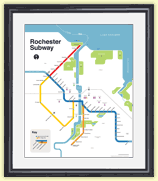


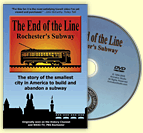
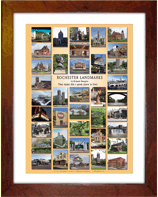
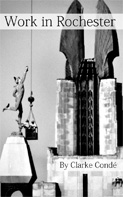
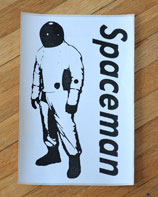
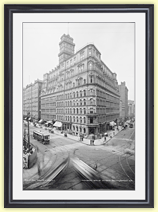



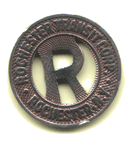




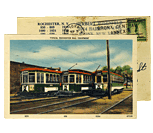





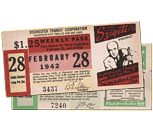












being that I live and work in a old house on Monroe Avenue (albeit in Pittsford, at the corner of French Road and Monroe Ave) I am very curious about the development potential up and down Monroe Ave. I think that we see a trend back towards Urban living, and the investments made on Monroe Ave have not gone un-noticed. Thank you for an interesting article. I also see a need for “inner-city short distance” vehicles, a remergence of small motorcycles and micro-cars, vehicles that are cheap to obtain AND maintain, easily stowable, and that are extremely frugal on fuel. The times, they are a changing.